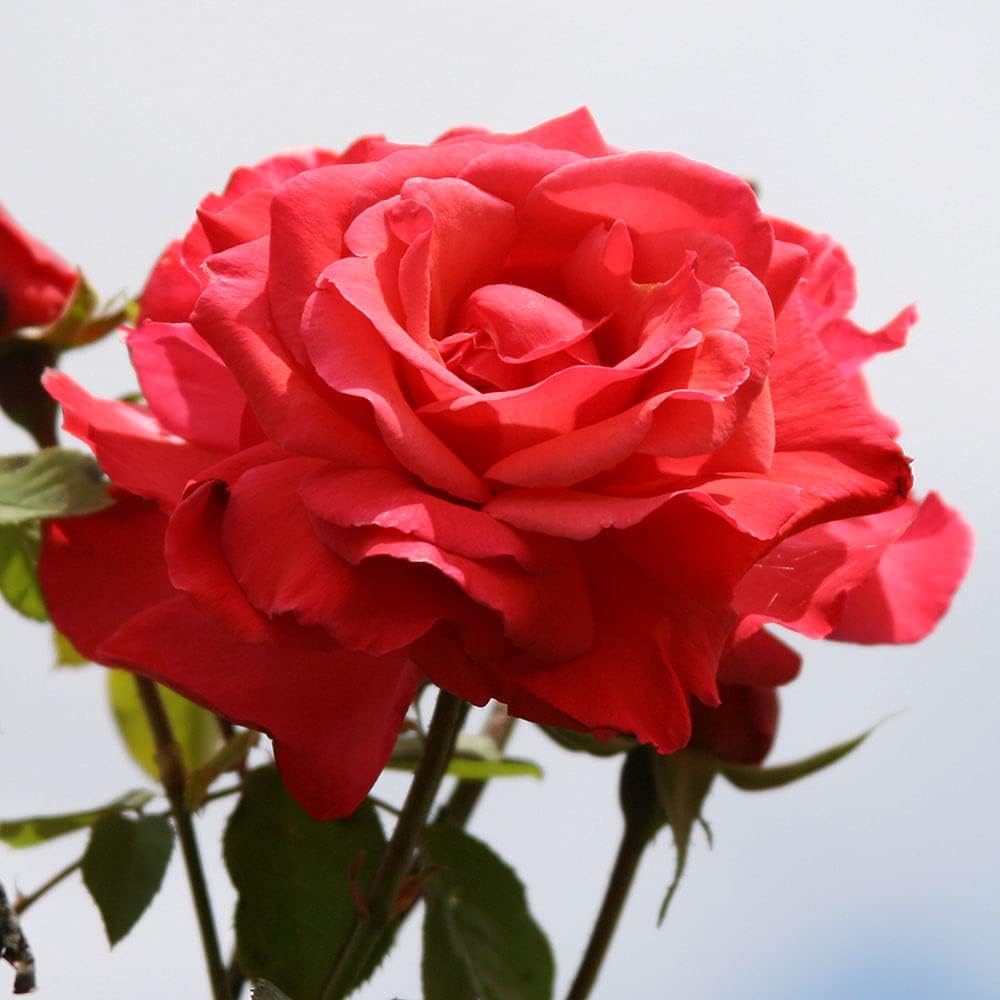Galway Bay rose

Galway Bay Rose: A Timeless Climber for Your Garden
The Galway Bay rose, a stunning climbing rose, captivates with its vibrant salmon to coral pink blooms and delightful fragrance. Bred by Samuel Darragh McGredy IV in 1960 and launched in France by NIRP International in 1967, Galway Bay has remained a favorite among gardeners for decades.
Characteristics of Galway Bay Rose
- Name: Galway Bay Rose
- Exhibition Name: Galway Bay®
- Type: Climber, Large-Flowered Climber
- Color: Salmon-pink to coral-pink with a darker reverse
- Fragrance: Mild, fruity
- Petal Count: 20 to 27 petals
- Bloom Size: 4-5 inches in diameter
- Bloom Form: Huge, very double, borne mostly solitary, in small clusters
- Bloom Frequency: Blooms in flushes throughout the season
- Foliage: Glossy, medium green
- Height: 8 to 12 feet (245 to 365 cm)
- USDA Zones: 6b through 9b
- Attributes: Long flowering, scented flowers, attractive to bees
- Uses: Garden, container, cut flowers
Vibrant Blooms and Fragrance
Galway Bay produces deep salmon to coral pink blooms that measure 4-5 inches in diameter. With 20+ petals per bloom, the flowers are large, double, and often borne in small clusters. These blooms not only add a splash of color to your garden but also exude a mild, fruity fragrance that enhances the sensory experience of your outdoor space.
Versatile Growth and Planting
This climbing rose is known for its vigorous growth, reaching heights of 8 to 12 feet. Its thorny stems and glossy, medium-green foliage create a striking backdrop for the vibrant blooms. Galway Bay thrives in full sun and adapts well to various soil types, including chalk, clay, loam, and sand, provided the soil is moist but well-drained. This rose suits various garden styles, including city and courtyard gardens, cottage and informal gardens, and patios and containers.
Ideal Growing Conditions
- Aspect: East-facing, South-facing, West-facing
- Sunlight: Full sun
- Soil Type: Chalk, clay, loam, sand
- pH: Acid, alkaline, neutral
- Moisture: Moist but well-drained
- Hardiness: RHS rating H6 (-20 to -15ºC), hardy in frigid winters
Attractive to Wildlife
One of the unique attributes of the Galway Bay rose is its ability to attract bees. The vibrant blooms provide a rich nectar source, making this rose valuable to a wildlife-friendly garden.
Plant Care Tips
Pruning
To maintain the health and vigor of your Galway Bay rose, prune in early spring. Remove old, dead, or diseased wood and cut back canes that cross each other. Regular pruning encourages new growth and helps the plant maintain a desirable shape.
Watering and Feeding
Water the plant regularly, especially during dry spells, to moisten the soil. Use a balanced rose fertilizer to support robust growth and abundant flowering throughout the season.
Pest and Disease Management
Galway Bay is known for its strong disease resistance. However, monitor the plant regularly for signs of common rose diseases and pests. Implement preventive measures, such as ensuring good air circulation around the plant and avoiding overhead watering.
The Galway Bay rose, with its stunning salmon to coral pink blooms and mild fruity fragrance, is a timeless addition to any garden. Its vigorous climbing habit, attractive foliage, and versatility in various garden styles make it a favorite among rose enthusiasts. Whether grown on walls, fences, pillars, or pergolas, the Galway Bay rose brings vibrant color and elegant beauty to outdoor spaces. Enhance your garden with this captivating rose and enjoy its long-lasting blooms and delightful fragrance throughout the season.
